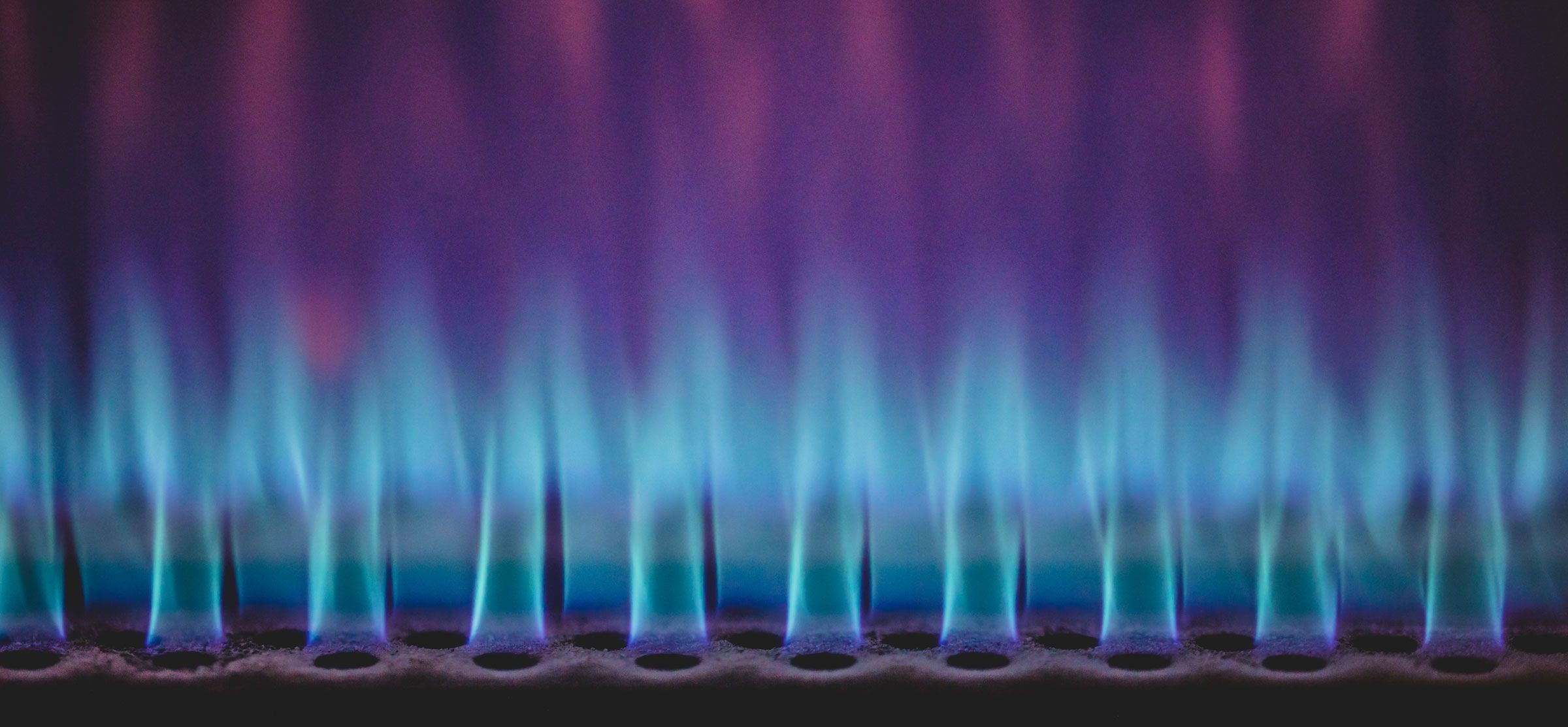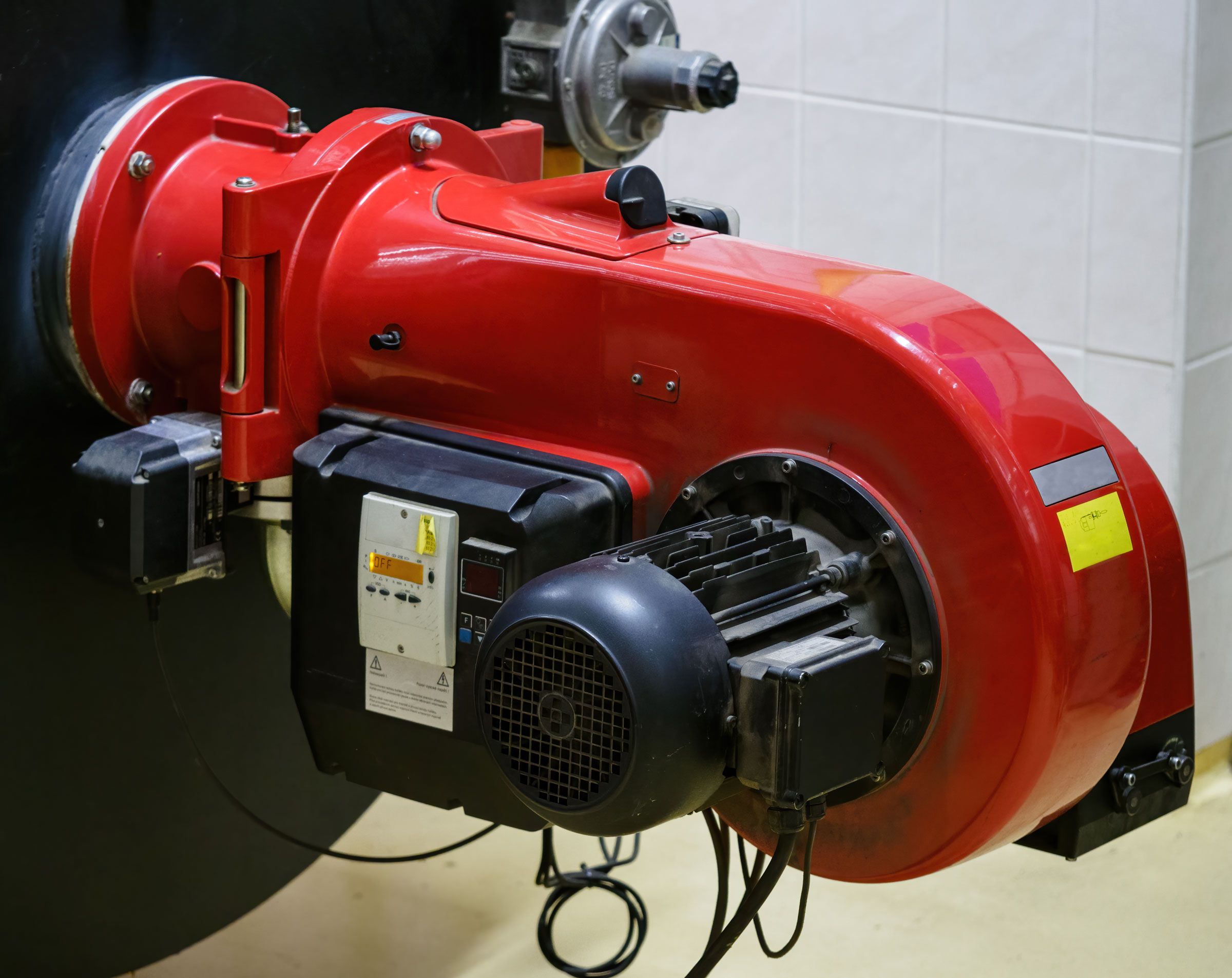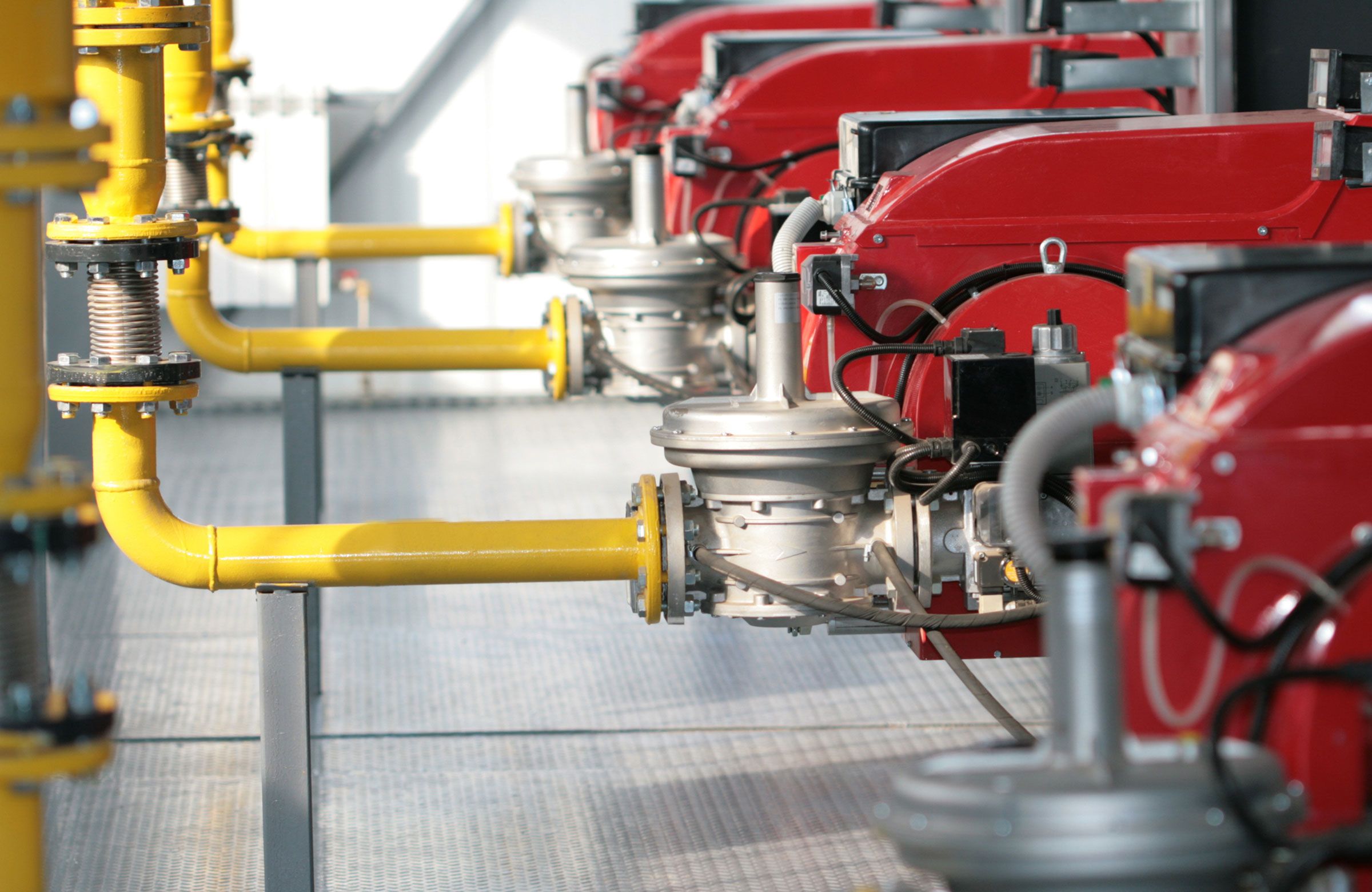
Many changes in manufacturing are taking place as the country emerges from the effects of the Covid-19 pandemic, which caused unintended interruptions to production. The growing need to be able to run full production with fewer employees on-site has led to the development of more remote operation capabilities, enabling many manufacturing companies to move more of their operations into automation and robotics. New facilities and production lines are being designed to maximize space, as well as to reduce production time and labor costs.
Although the Industrial Burners Industry has experienced a year of slowed progress due to the pandemic, there has been ongoing design and development of high-efficiency, low-emissions products for their customers. The ultimate goal for the industry is to develop low-emissions burners that do not sacrifice combustion efficiency.
Burners are a key component of every heating system that provides temperature control throughout entire manufacturing facilities. The increased implementation of automation and robotics in manufacturing will present many new opportunities for the Industrial Burners Industry, as will the retrofitting of these new technologies and the necessary maintenance of nearly 60,000 existing boilers throughout the country.
In this issue of EVERYTHING UNDER CONTROL, we will talk about what industrial burners are, how they operate, and how new technology will affect the manufacturing industry. Many commercial office and multi-family buildings use boilers for heating as well — so watch for a future issue in which we will review how the new technologies presented here are impacting those business segments as well.

Industrial burners today and tomorrow
Every industrial heating boiler commonly used in heating processes relies on a burner. These heat processes are used in a wide variety of manufacturing industries — including automotive, major appliances, food and beverage, petrochemical, power, chemical, and more.
What are industrial burners?
An industrial burner is a mechanical device that mixes fuel and air together — and, using an ignition device, provides a platform for combustion. Industrial burners are a key component of every boiler and furnace heating system that provides temperature control throughout entire manufacturing facilities, as well as other heating processes during manufacturing.
An industrial burner is the most important component of a system for the smooth operation and stability of an industrial boiler, furnace or other manufacturing process where high temperatures are needed. Good reliability, high efficiency and low emission are the target for both equipment users and machinery manufacturers.
Achieving higher efficiency
In recent years, ongoing research and development has led to increased burner efficiency. All burners have a specific turndown — i.e. the ratio of high fire to low fire. Historically, the typical turndown on a burner was 4:1 or 5:1 — but with today’s technology and burner design, 10:1 can be achieved with good repeatability and relative ease of control.
Selecting a burner that has lower excess air is an additional way to increase efficiency. Excess air also can be denoted as excess O2. Excess O2 is the amount of oxygen (O2) in the incoming air that is not used during combustion and is related to the amount of air above the stoichiometric requirement for complete combustion.
Renewable fuel oil
One major trend seen in the industrial burner market today is the use of renewable fuel oil. With focus increasing on reducing emissions harmful to the climate, it has become more important than ever to use renewable fuel for operations. Many burner manufacturers across a wide variety of industries are aggressively investing in research and development to create advanced technology industrial burners.
New control systems
Today’s advanced burner controls also help to increase efficiency. Controls maintain the burner firing rate and the ability of a burner to modulate from low to high. They prevent hysteresis and maintain a set amount of excess air through the firing rate. New controls will increase repeatability, but they cannot make a 3:1-turndown burner achieve a 10:1 turndown. A new high technology burner would be needed to affect a better turndown ratio.

Industrial burners in high demand as technology improves operations and lowers costs
Several types of burners used in the industry now offer technology that is changing many aspects of how the industry will conduct business moving forward.
Duel fuel burner
The dual fuel burner provides both a gas nozzle as well as a second fuel nozzle to allow maximum flexibility. The air regulator, burner stabilizer, ignition device and flame monitoring device controls are all designed to be suitable for both fuels. The burners are then able to control the air mixing via a mechanical process. This type of industrial burner is most commonly used for applications that use heat treating, galvanizing, and melting furnaces.
Biogas burner
Burners using biogas fuel offer durability, reliability and long-lasting life. Biogas burners are designed specifically for biogas fuel and cannot operate using normal natural gas. These new burners have been adopted in several industrial applications.
High-velocity burner
High-velocity burners are robust and extremely stable burners with high excess air capability. They produce rapid and uniform heat circulation inside a furnace — and offer improved and controlled heat transfer to the load. These burners are mainly used in aluminum melting, heat treatment, and several other similar industries.
Gas burner
Gas burners are mechanical devices that have shown vast improvements in efficiency in recent years. Designed to produce a flame to heat products for utilization in further applications, these burners are mainly found in the food industries and various other industrial sectors.
Oil burner
Oil burners are heating devices, which assist in burning heating oils and various other similar fuels. They are a major type of industrial burner — available for numerous different applications and able to meet the technical specifications of many industries.
Burner emission-control technologies

- Flue-Gas Recirculation: In FGR, a portion of the exhaust (flue) gas circulates back into the combustion zone to lower the flame temperature and reduce nitrogen-oxide (NOx) formation. The exhaust gas of the mixed air is higher in temperature than ambient air — and, based on the amount of mass flow and temperature, may impact a system’s fan-size and horsepower requirements. Cooling the flame excessively will cause a boiler to rumble and form soot and carbon monoxide (CO). As a result, a qualified technician should be present during installation.
- Surface-Stabilized Combustion: Surface-Stabilized Combustion uses metal-fiber technology, which has emerged within the last decade and has become widely accepted among larger industrial-burner manufacturers. This process does not include a traditional flame stabilization diffuser — and thus, does not produce the more typical diffusion-based flame. Rather, the fuel and air are pre-mixed and the flame is stabilized on a metal-fiber material. This method enables the burner to reach single-digit NOx levels by stretching the flame, eliminating hot-flame zones and reducing thermal NOx formation.
EPA burner type designations
There are several types of burners available in the industry — described by the Environmental Protection Agency as the following:
- “PC” refers to conventional pulverized coal boilers. Typical configurations include wall-fired and tangentially fired boilers — also called T-fired boilers. In wall-fired boilers the burner’s coal and air nozzles are mounted on a single wall or opposing walls — while in tangentially fired boilers the burner’s coal and air nozzles are mounted in each corner of the boiler.
- “Cyclone” refers to cyclone boilers where air and crushed coal are injected tangentially into the boiler through a “cyclone burner” and “cyclone barrel.” This creates a swirling motion allowing smaller coal particles to be burned in suspension and larger coal particles to be captured on the cyclone barrel wall where they are burned in molten slag.
- “Stoker” refers to stoker boilers where lump coal is fed continuously onto a moving grate or chain, which moves the coal into the combustion zone where air is drawn through the grate and ignition takes place. The carbon gradually burns off leaving ash, which drops off at the end into a receptacle where it is removed for disposal.
- “FBC” refers to “fluidized bed combustion” where solid fuels are suspended on upward-blowing jets of air, resulting in a turbulent mixing of gas and solids and a tumbling action which provides especially effective chemical reactions and heat transfer during the combustion process.
In addition, there are other miscellaneous burner types including vertically-fired burner configurations, arch roof, cell burners, as well as vertically fired burner configurations.

Industrial Internet of Things
The Industrial Internet of Things (IIoT) has impacted virtually every industry on the planet — and the burner industry will be no different. Apps are becoming available that will give them the ability to control production, maintenance schedules and increase communications from virtually anywhere through their internet connection.
Remote monitoring
Remote monitoring provides an opportunity for operators and engineers to maintain control of their equipment, even if they are not physically on-site. This technology has transformed over the years — from its early beginnings of communicating via pagers, beepers and fax machines to utilizing many online connected devices today. The Industrial Burner Industry will increasingly gain the ability to control their entire plant and monitor all operations from apps on their computers, laptops or cell phones.
The necessary restrictions during the Covid-19 pandemic have shown a growing need for manufacturers to be able to run production with less employees onsite and to provide more remote capabilities for operators and engineers. Burner manufacturers are beginning to embrace the possibility of having control over their manufacturing operations from remote locations.
Online computing services
- Platform as a Service (PaaS) is a category of cloud computing services that allows companies to provision, instantiate, run and manage a modular bundle comprising a computing platform and one or more applications. This can be accomplished without the complexity of building and maintaining the infrastructure typically associated with developing and launching the application(s) — and to allow developers to create, develop and package such software bundles.
- Software as a Service (SaaS) is a software distribution, licensing and delivery model in which software is licensed on a subscription basis and is centrally hosted. SaaS is sometimes referred to as “on-demand software.” A service provider gives customers access through the internet to applications that are developed and owned by the provider. This service allows each user to access programs via the internet instead of having to install the software on the user’s computer. Using SaaS gives users a greater degree of control and knowledge over their project and results in a more efficient and accurate system.
Electrical machine controls for over four decades
We are proud to have played an integral part in the operation and control of the many different types of automation and robotic manufacturing systems for the Industrial Burners Industry.
We hope you have benefited from our latest issue of EVERYTHING UNDER CONTROL and have learned something you may not have known before. In future issues, we will provide you with information on the latest trends and advancements for a wide variety of industries that depend on c3controls products as an integral part of their machine controls.
ISO 9001:2015
Certified
17+ Million Product
Configurations
Lifetime
Warranty
Guaranteed
Same-Day Shipping
Advantage Pricing
Save Up To 40%
c3controls Headquarters, USA
664 State Avenue
Beaver, PA 15009
